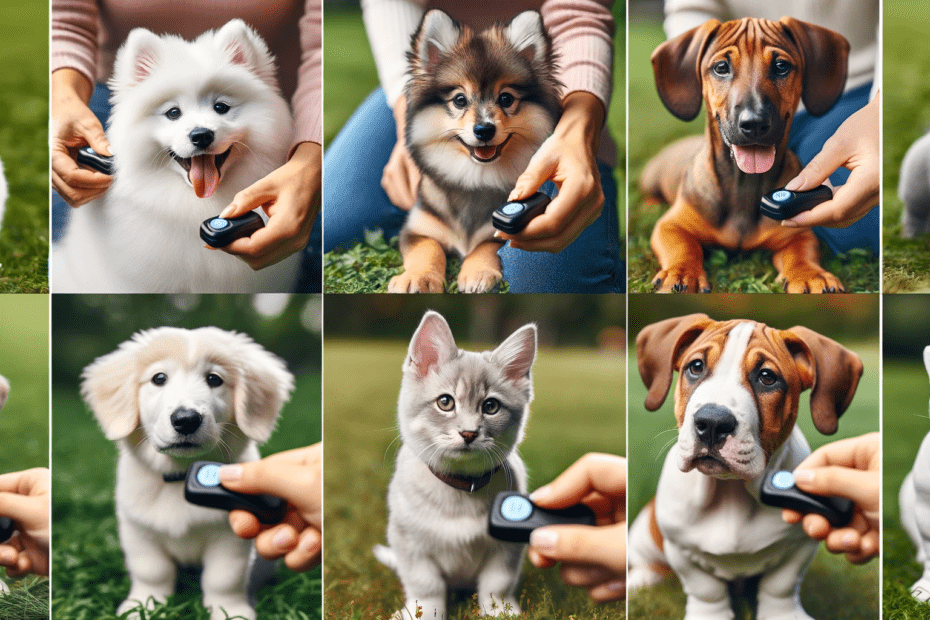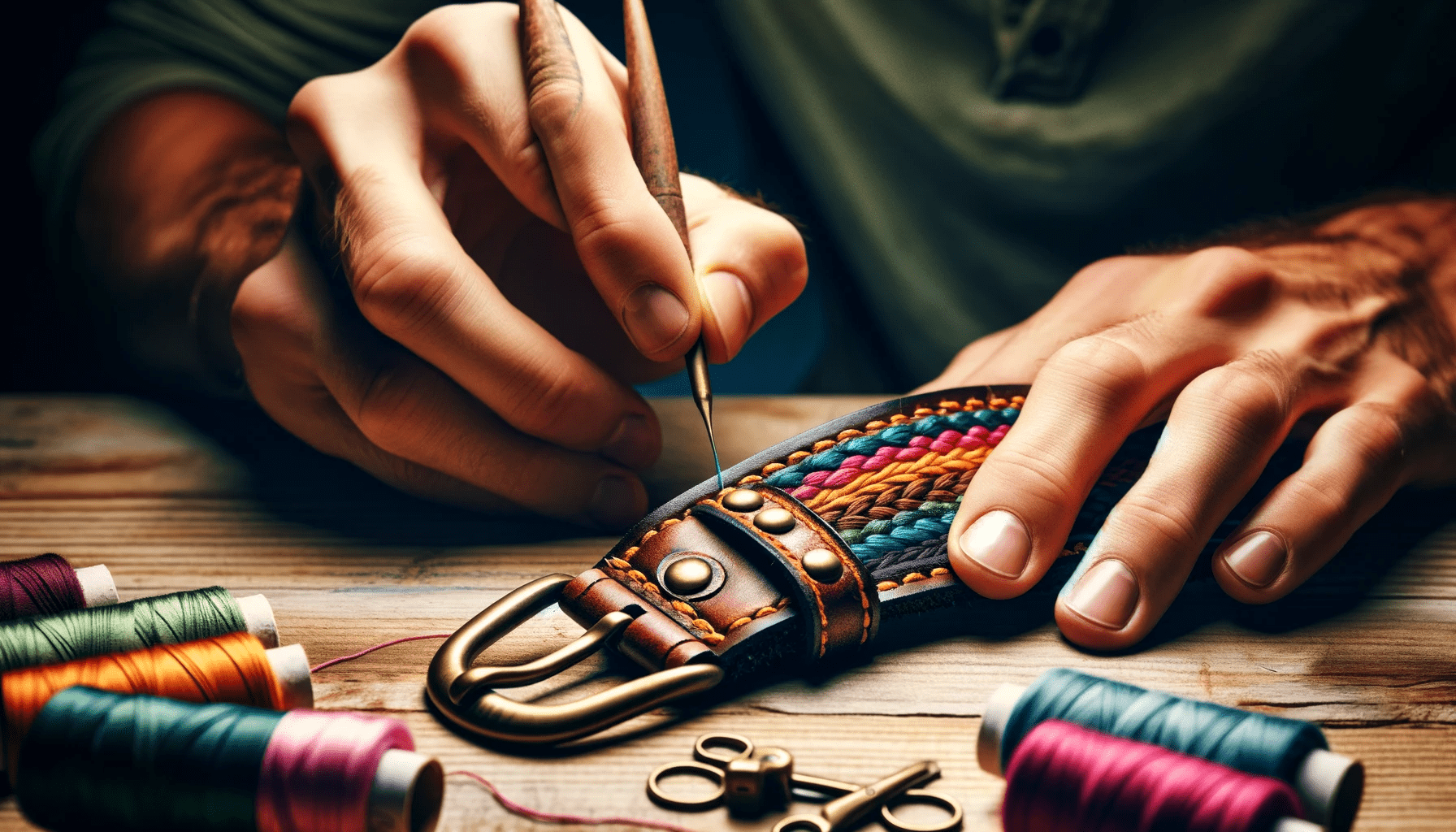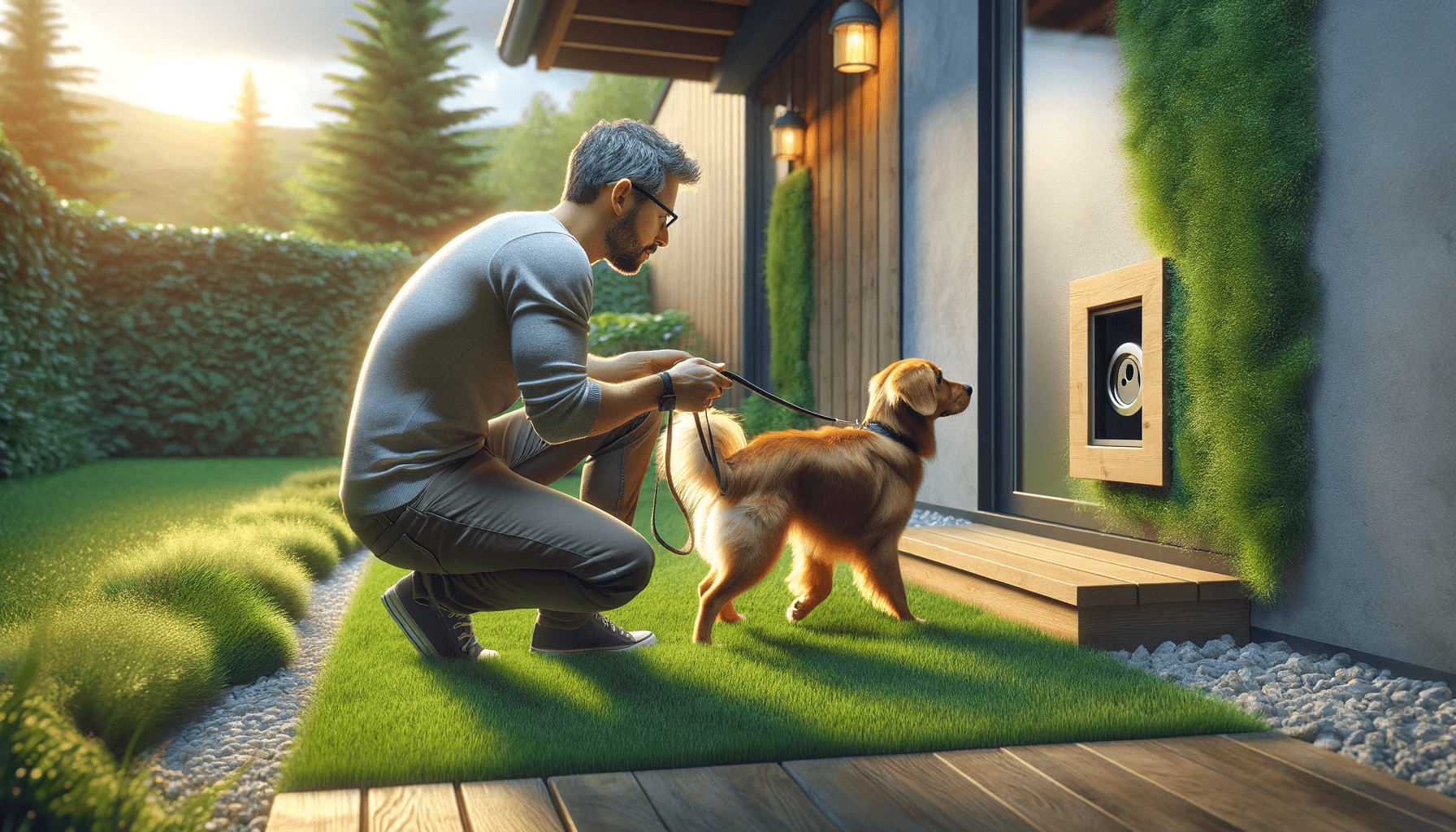Are you struggling to train your puppy? Look no further!
In this article, we will explore the 7 best clicker training techniques that will help you effectively teach your furry friend. With timing and consistency, targeting specific behaviors, and positive reinforcement, you'll be amazed at how quickly your puppy learns.
We'll also cover desensitization, problem-solving, and troubleshooting to ensure a successful training journey.
Get ready to unleash your pup's potential!
Key Takeaways
- Timing and consistency are crucial in clicker training for puppies.
- Targeting specific behaviors by breaking them down into smaller steps helps with clear communication and quicker progress.
- Clicker training is an effective method of behavior shaping, using positive reinforcement and rewarding each step.
- Precision in clicker training involves timing the click with the desired behavior and using clear and consistent signals.
Timing and Consistency
To achieve effective clicker training results with your puppy, timing and consistency are key. Improving response time and reinforcing good behavior require precise timing and consistent application of the clicker training method.
When using the clicker, you must click at the exact moment your puppy exhibits the desired behavior. This immediate reinforcement helps your puppy associate the click with the behavior, making it more likely to be repeated. For example, if you're teaching your puppy to sit, click the moment their bottom touches the ground. This precise timing helps them understand what behavior you're rewarding.
Consistency is equally important in clicker training. Use the clicker consistently for each desired behavior to reinforce its importance. If you only click occasionally or inconsistently, your puppy may become confused and their response time may suffer. Consistency also extends to your cues and commands. Use the same verbal cues and hand signals consistently, so your puppy can easily understand what you're asking of them.
Targeting Specific Behaviors
To effectively shape your puppy's behavior, it's important to target specific actions and train with precision.
By breaking down desired behaviors into smaller steps, you can gradually build up to the desired outcome.
This approach allows for clear communication and helps your puppy understand what's expected of them, resulting in quicker and more consistent training progress.
Effective Behavior Shaping
One effective way to shape your puppy's behavior is by using the clicker training technique. Clicker training is a form of positive reinforcement that involves using a clicker, a small handheld device that makes a distinct clicking sound, to mark desired behaviors. This method is based on the principles of behavior modification and can be highly effective in targeting specific behaviors.
To shape your puppy's behavior using clicker training, you can start with simple shaping exercises. These exercises involve breaking down the desired behavior into small, achievable steps and reinforcing each step with a click and a treat. By gradually building on these steps, you can shape your puppy's behavior and teach them new skills in a positive and rewarding way.
Precision in Training
To achieve precision in training and target specific behaviors, you can further refine your puppy's skills through clicker training. This technique allows you to shape your puppy's behavior by using a clicker to mark the desired action, followed by a reward.
Here are some strategies to help you achieve precision in your training:
- Precision in timing: Timing is crucial in clicker training. The click should occur the moment your puppy performs the desired behavior, followed by an immediate reward. This helps your puppy associate the click with the correct action.
- Clear signals: Use clear and consistent signals to indicate the behavior you want. Whether it's a verbal cue, hand signal, or body language, ensure your puppy understands what you're asking for.
- Break behaviors down: If you're teaching complex behaviors, break them down into smaller steps. This allows you to target and reinforce each specific behavior, making it easier for your puppy to understand.
- Utilize reinforcement strategies: Experiment with different reinforcement strategies, such as using high-value treats or incorporating play as a reward. Find what motivates your puppy and use it to reinforce their behavior.
Shaping and Capturing
Start by observing and rewarding specific behaviors that naturally occur in your puppy's daily routines.
Shaping and capturing are effective techniques for training your puppy to perform creative tricks and advanced obedience commands. Shaping involves breaking down a desired behavior into smaller, manageable steps and reinforcing each step until the full behavior is achieved.
For example, if you want your puppy to spin in a circle, you can reward them for turning their head in the desired direction, then reward them for taking a step in that direction, and so on, until they complete a full circle.
Capturing, on the other hand, involves rewarding your puppy for spontaneously displaying a behavior you want to reinforce. For instance, if your puppy naturally sits when they want your attention, you can use a clicker to capture that behavior and reward them for it.
Both shaping and capturing require careful observation and precise timing to be successful.
Positive Reinforcement
Continue building your puppy's training skills by utilizing the power of positive reinforcement. This training method is based on rewarding desired behaviors, which not only helps in teaching your puppy commands but also helps in building trust and confidence. Here are four key benefits of using positive reinforcement in your puppy's clicker training:
- Effective Communication: Positive reinforcement allows you to effectively communicate with your puppy by associating rewards with desired behaviors. This helps your puppy understand what you expect from them and encourages them to repeat those behaviors.
- Building Trust and Confidence: Reward-based training methods create a positive and supportive environment for your puppy. By rewarding their efforts and successes, you build their trust and confidence, making them more willing to learn and try new things.
- Enhancing the Bond: Positive reinforcement strengthens the bond between you and your puppy. By using rewards, you create positive associations with training sessions, making them enjoyable for both of you and strengthening your relationship.
- Long-lasting Results: Positive reinforcement techniques focus on teaching your puppy to make good choices on their own. By rewarding desired behaviors, you help your puppy understand what's expected of them, leading to long-lasting results and a well-behaved companion.
Desensitization and Counterconditioning
To effectively train your puppy, it's important to understand the concepts of desensitization and counterconditioning.
Desensitization involves gradually exposing your puppy to something they fear or find overwhelming.
Counterconditioning aims to change their emotional response to that specific stimulus.
By using these techniques, you can help your puppy overcome fear and develop positive associations.
This will ultimately lead to a more confident and well-behaved companion.
Overcoming Fear Through Conditioning
You can work on overcoming fear in your puppy through the process of conditioning known as desensitization and counterconditioning. This technique involves gradually exposing your puppy to the fear-inducing stimulus in a controlled and positive way, while simultaneously building their confidence and associating the stimulus with positive experiences.
Here are four steps to help you effectively overcome your puppy's fear:
- Identify the fear-inducing stimulus: Observe your puppy's behavior and identify the specific trigger that causes fear or anxiety.
- Start with gradual exposure: Start by exposing your puppy to the stimulus at a low intensity or from a safe distance. Gradually increase the exposure as your puppy becomes more comfortable.
- Use positive reinforcement: Reward your puppy with treats, praise, or play whenever they show calm or positive behavior in the presence of the stimulus.
- Be patient and consistent: Overcoming fear takes time and consistency. Practice desensitization and counterconditioning regularly to help your puppy build confidence and overcome their fears.
Changing Emotional Response
Overcoming fear through conditioning, such as desensitization and counterconditioning, can be achieved by gradually exposing your puppy to fear-inducing stimuli while building their confidence and associating positive experiences with these stimuli. Building confidence is crucial in helping your puppy overcome their fears.
Socialization techniques play a significant role in changing your puppy's emotional response. By introducing your puppy to various people, animals, and environments, you can help them become comfortable and confident in different situations. Positive reinforcement is key during this process, as it helps your puppy associate positive experiences with previously fear-inducing stimuli.
Gradually increasing the intensity of the stimuli, while ensuring your puppy feels safe and supported, will help them develop a more positive emotional response. With consistent training and patience, you can help your puppy overcome their fears and become a well-adjusted and confident companion.
Chaining and Sequencing
Once you have mastered the basics of clicker training, it's important to understand how to effectively chain and sequence behaviors to further enhance your puppy's learning experience. Chaining and sequencing involve teaching complex commands and improving focus and attention.
Here are four key techniques to help you achieve this:
- Backchaining: This technique involves teaching the last behavior in a sequence first and then gradually adding the preceding behaviors. By starting with the final behavior, your puppy will have a clear understanding of the end goal.
- Forward Chaining: In contrast to backchaining, forward chaining involves teaching the first behavior in a sequence and gradually adding the subsequent behaviors. This can be useful for teaching longer sequences and reinforcing the beginning of a behavior chain.
- Cue Transfer: Once your puppy has mastered a behavior, you can transfer the cue to a new behavior. For example, if your puppy has learned to touch a target with their nose, you can transfer the cue to touch a different object or perform a different action.
- Generalization: It's important to practice behaviors in different environments and with different distractions to help your puppy generalize their training. This will improve their focus and attention, ensuring that they can perform the behaviors in any situation.
Problem Solving and Troubleshooting
To address any challenges that may arise during clicker training, it's important to employ problem-solving and troubleshooting techniques. When it comes to addressing leash pulling, it's essential to start by teaching your puppy loose leash walking. Begin by rewarding your puppy for walking by your side without pulling. Use the clicker to mark the desired behavior and offer a treat as a reward. Gradually increase the duration of your walks and continue to reinforce the behavior. If your puppy starts pulling, stop walking and wait for them to calm down before starting again. Consistency is key in addressing leash pulling.
Dealing with excessive barking can be a common issue for puppies. The first step is to identify the trigger for their barking. It could be boredom, fear, frustration, or a need for attention. Once you understand the cause, you can address it accordingly. For example, if your puppy barks out of boredom, provide them with stimulating toys or engage them in interactive play sessions. If it's fear-related, gradually expose your puppy to the trigger in a controlled and positive manner. Remember to use the clicker to mark and reward moments of calm or quiet. Consistency, patience, and positive reinforcement are essential in addressing excessive barking.
Frequently Asked Questions
Can Clicker Training Be Used for Adult Dogs or Is It Only Effective for Puppies?
Clicker training can be effective for adult dogs as well as puppies. It's a versatile method that can be used to teach new behaviors or modify existing ones. With consistency and positive reinforcement, clicker training can help any dog learn and thrive.
How Long Does It Typically Take to See Results From Clicker Training?
To see results from clicker training, it typically takes consistency and patience. Start by introducing the clicker to your older dog or fearful puppy in a positive and calm environment. Gradually incorporate clicker techniques into their training sessions.
Can Clicker Training Be Used to Stop Unwanted Behaviors in Puppies?
Yes, clicker training can be used to stop unwanted behaviors in puppies. By using clicker training to address common puppy behavior problems, you can effectively teach obedience and enjoy the benefits of positive reinforcement.
Is It Necessary to Use Treats as a Form of Positive Reinforcement During Clicker Training?
Using alternative methods of positive reinforcement in clicker training can be effective. However, it's important to consider the potential drawbacks of not using treats, such as a decreased motivation for learning and slower progress.
Are There Any Specific Breeds or Temperaments of Puppies That Are More or Less Responsive to Clicker Training?
Some specific breeds or temperaments of puppies may be more or less responsive to clicker training. Additionally, the effectiveness of clicker training can vary for different age groups of dogs.
Conclusion
In conclusion, clicker training offers a range of effective techniques for training puppies. By consistently using positive reinforcement and timing, targeting specific behaviors, and employing shaping and capturing, you can successfully teach your puppy desired behaviors.
Additionally, desensitization and counterconditioning can help address any fears or anxieties your puppy may have. Chaining and sequencing techniques allow for more complex behaviors to be taught, while problem-solving and troubleshooting can address any challenges that may arise.
With these techniques, you can expertly train your puppy using clicker training.






